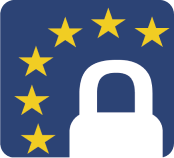- core objectives of eIDAS
- e-signatures according to eIDAS
- impact on businesses
- comply with eIDAS
Have questions about the legal implications?
check our legality guide hereFor queries or feedback, write to us at support@zohosign.com

The eIDAS regulation: Everything it stands for
eIDAS, short for electronic IDentification, Authentication and Trust Services, came into existence on July 1, 2016, succeeding the outdated Electronic Signatures Directive of 1999/93/EC. Established under EU regulation 910/2014 and adopted by all EU member states, the eIDAS regulation comprised of a fresh set of regulations to administer electronic transactions and trust services in the European Union. Securing online transactions is paramount. The eIDAS regulation is an important framework designed to facilitate secure transactions across the EU and beyond.
Core objectives of eIDAS
Cross-border recognition
Facilitating electronic transactions, eliminating barriers, and promoting interoperability across the EU.
Improved security
Mitigating fraud, unauthorized access, and identity theft with enhanced security and authentication techniques.
Legal validity
Offering legal validity to businesses, individuals, and public authorities involved in electronic transactions by enforcing strict electronic transaction policies.
Electronic signatures according to eIDAS
The eIDAS regulation classifies electronic signatures into three levels or types: simple electronic signatures, advanced electronic signatures, and qualified electronic signatures.
Simple electronic signature
An electronic signature, as defined in eIDAS, is “any data in electronic form which is attached to or logically associated with other data in electronic form and which is used by the signatory to sign.” Simply put, it is a signature in electronic form that acts as proof of the signer's consent. This signature could be an image of the signature, a checked box next to an “I accept” field on a website, or signatures signed using trusted digital signature platforms.
Advanced electronic signature
An advanced electronic signature is a type of electronic signature that has certain conditions to satisfy in order to provide an additional layer of security, making your documents tamper-proof. To be certified as an advanced electronic signature, it must be:
Uniquely linked to the signatory
Capable of identifying the signatory
Created in a manner or using a means solely under the control of the signatory
Linked to the signed data such that that if the record were changed, the signature would become invalidated
Qualified electronic signature
The most sophisticated signature that enjoys the same legal status as a written signature. There are two additional requirements to fulfill to be considered a qualified electronic signature:
It can only be created using a qualified signature-creation device that has undergone an eIDAS certification process.
It must be backed by a qualified certificate issued by a qualified trust service provider that has been audited and granted a qualified status by the national competent authority, as specified in the EU's Trusted List.
How does it impact businesses?
The eIDAS regulation focuses on promoting trust, security, and interoperability. With its implementation, businesses across the EU rely on trust services and digital signature solutions that offer secure signing services. The silver lining in the eIDAS framework is that it paves the way for trust service providers to be completely cloud-based, enabling users to create and verify electronic signatures from anywhere, anytime.
How can you comply with eIDAS?
Navigating compliance is no easy task, but we've got you covered! Zoho Sign, our trusted digital signature platform, allows you to create eIDAS-compliant digital signatures, ensuring safe and seamless transactions. We can help you sign and send documents that are legally binding and admissible in the court of law. Learn more about eIDAS and stay compliant with Zoho Sign.







